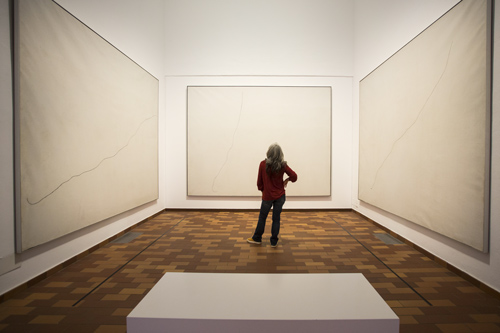Online bookings
24 hours a day
0044 (0) 20 3239 1595
English Phone
Mon-Fri: 8-16:00 GMT
Customer Service
Whilst in Barcelona, you will have the opportunity to visit the largest and most prestigious collection of the artist who revolutionized the art world in the 20th century, Joan Miró. In this article, you will find all the useful information and tips you'll need for visiting the Joan Miró Foundation, a special place in which to admire and lose yourself in contemplation of his works.

Buy Tickets to Joan Miro Foundation
Joan Miró i Ferrà was a very influential artist of the 20th century who became famous thanks to his innovative contribution to the artistic current of surrealism. Originally from Barcelona, (he was born here on 20th April 1893), he was a thoughtful traveler which had a great influence on his activities as an artist. In fact, his so-called "emotional landscapes" were mainly inspired by the village of Mont-roig (which is located in the Catalan province of the town of Tarragona) as well as Paris and Mallorca. Initially, in particular, his work represented the counterpoint of the intellectual turmoil which was being experienced in Paris during the 1920's. Whilst on the one hand, when in the French capital, Miró was an active participant in the avant-garde artistic movements, on the other hand, his long retreats in Mont-roig consolidated his identity as an artist. In 1956, in an act of voluntary exile, the artist moved to Mallorca permanently and founded, with his friend, the architect Josep Lluís Sert, the studio of which he had always dreamed. Miró's works which consisted of paintings, sculptures and ceramics, are the reflection of an attraction which had driven him throughout his life: this was the dialectical force between apparently contrasting concepts, such as the sky and the land, night and day, violence and evasion thereof, even whether to paint or not. From this study, one of the most exceptional plastic representations of the 20th century would be born.
The Joan Miró Foundation is located inside the Parc de Montjuïc, in the neighborhood of Montjuïc. In order to get to the Foundation, you can choose from a variety of different means of transport:
The most convenient way to get there is obviously by taxi and without a doubt, the most inconvenient is to travel there by Metro. On rare occasions, the Metro can be convenient but in this instance, in the same way as with Park Güell, you will need to remember that there is a long uphill climb that will take at least 15 to 20 minutes.
The Foundation is open to visitors on Tuesdays, Wednesdays and Fridays from 10:00 until 18:00 hours during the winter months, (from November to March) and from 10:00 until 20:00 hours during the summer months (from April to October). However, on Thursdays, the Foundation remains open until 21:00, on Saturdays until 20:00 and on Sundays, from 10:00 until 15:00 hours. On Mondays, the Foundation has its weekly closure. It is worth knowing that you can access the Foundation up to 30 minutes before closing time.
A standard entry to the Joan Miró Collection + the temporary Collection costs €12.00. Children under the age of 15 can enter for free. It is also possible to visit the temporary collection for a price of €7.00 and at a price of €5.00 for students and pensioners.
The first useful piece of information is that the Museum can be visited in its entirety, including access for disabled visitors. Inside the building, you will find a souvenir shop, a bar, a bookshop and a library. The average duration of a visit is around 30 minutes.
The Joan Miró Foundation, which is known as the Fundació Joan Miró in Catalan, houses around 400 works which includes paintings and sculptures plus 9 hangings, 4 ceramic works and more than 10,000 other items which include drawings and sketches. This is effectively the largest and most varied collection of the artist's works in the world. The majority of the works here were donated by the artist himself as well as some by his wife, Pilar Juncosa, as well as others which were donated by his beloved friend Joan Prats. However, the collection grew over time, thanks to the donations that have been made in latter years. From the works which can be admired inside the Foundation, it is possible, not just to intensify one's knowledge of the artist, but also to appreciate the significant changes and the evolution of his work during the course of the 20th century. It is also possible to have a glimpse of some of the artist's sketches in order to better understand and appreciate his particular creative process. His creations are real works of art which are capable of conveying completely the relationship that the artist had with the land, his opinion of the war and his personal desire to escape from the canvas and his search for poetry in his work. His artworks provide direct contact with the artistic senses which live and breathe within every one of us, generating a profound state of thought and an evocative silence.
My comments